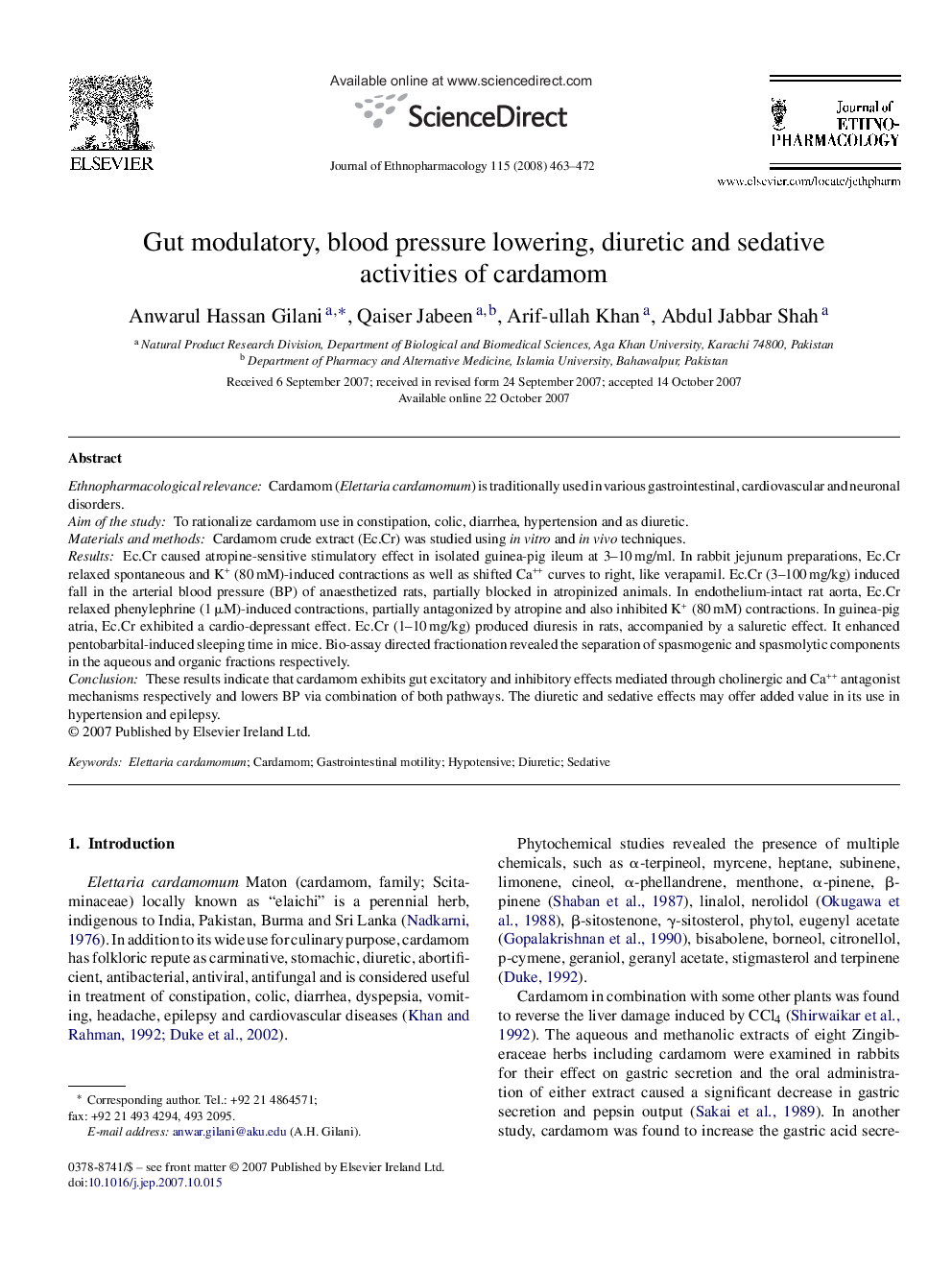| Article ID | Journal | Published Year | Pages | File Type |
|---|---|---|---|---|
| 2546798 | Journal of Ethnopharmacology | 2008 | 10 Pages |
Ethnopharmacological relevanceCardamom (Elettaria cardamomum) is traditionally used in various gastrointestinal, cardiovascular and neuronal disorders.Aim of the studyTo rationalize cardamom use in constipation, colic, diarrhea, hypertension and as diuretic.Materials and methodsCardamom crude extract (Ec.Cr) was studied using in vitro and in vivo techniques.ResultsEc.Cr caused atropine-sensitive stimulatory effect in isolated guinea-pig ileum at 3–10 mg/ml. In rabbit jejunum preparations, Ec.Cr relaxed spontaneous and K+ (80 mM)-induced contractions as well as shifted Ca++ curves to right, like verapamil. Ec.Cr (3–100 mg/kg) induced fall in the arterial blood pressure (BP) of anaesthetized rats, partially blocked in atropinized animals. In endothelium-intact rat aorta, Ec.Cr relaxed phenylephrine (1 μM)-induced contractions, partially antagonized by atropine and also inhibited K+ (80 mM) contractions. In guinea-pig atria, Ec.Cr exhibited a cardio-depressant effect. Ec.Cr (1–10 mg/kg) produced diuresis in rats, accompanied by a saluretic effect. It enhanced pentobarbital-induced sleeping time in mice. Bio-assay directed fractionation revealed the separation of spasmogenic and spasmolytic components in the aqueous and organic fractions respectively.ConclusionThese results indicate that cardamom exhibits gut excitatory and inhibitory effects mediated through cholinergic and Ca++ antagonist mechanisms respectively and lowers BP via combination of both pathways. The diuretic and sedative effects may offer added value in its use in hypertension and epilepsy.
